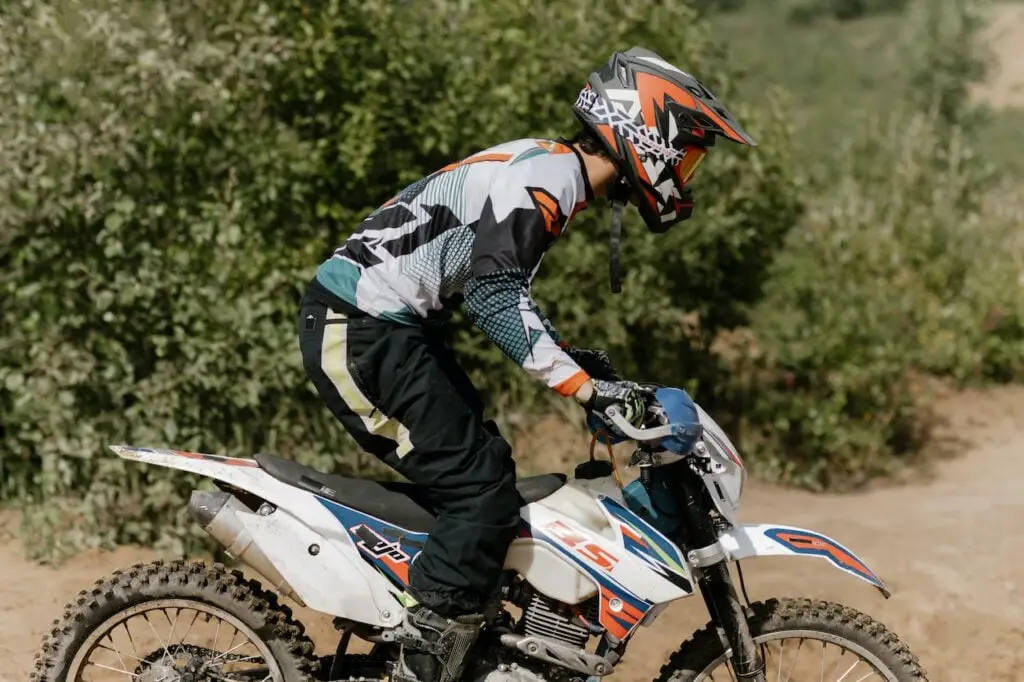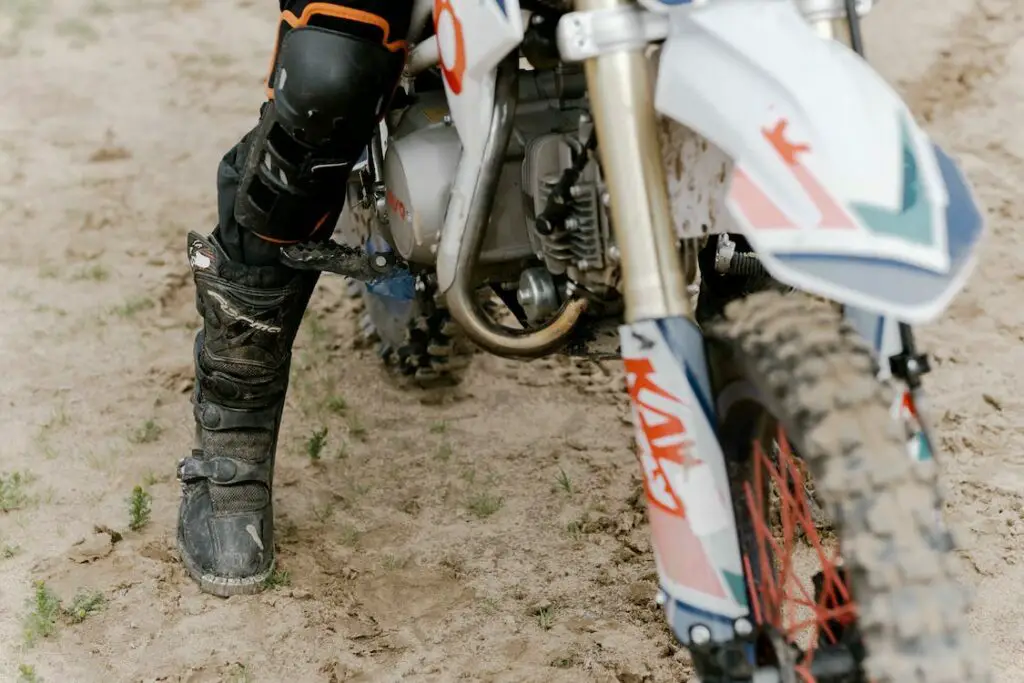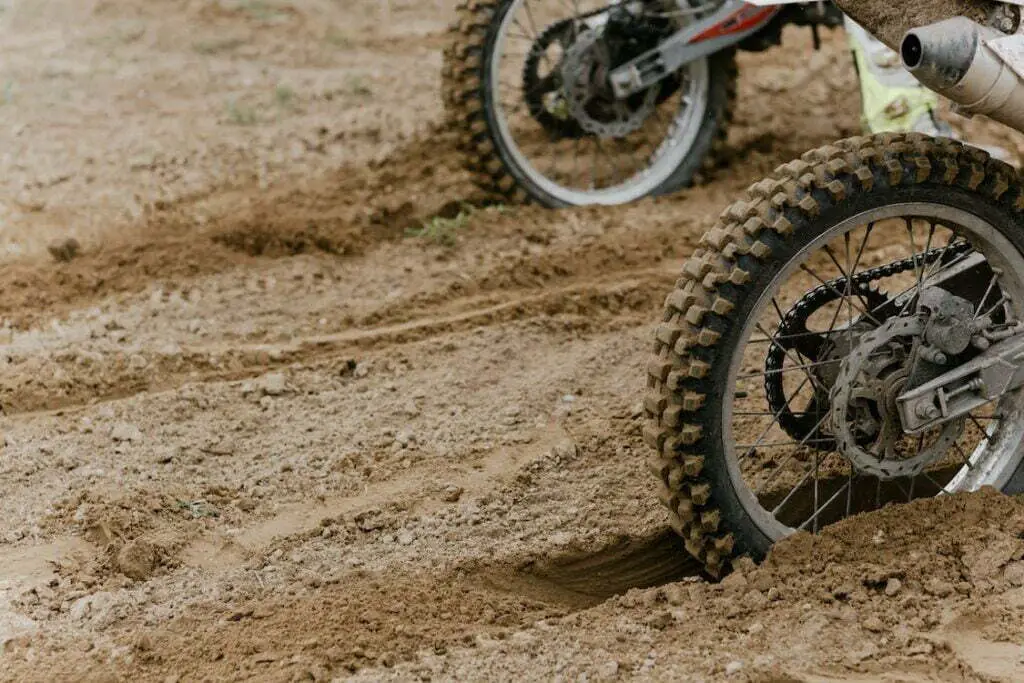When I first got my dirt bike, I was so stoked to hit the trails and try all the tricks I’d seen the pros do.
But after riding for hours on end, I realized my body was paying the price.
Soreness and fatigue took over, and it wasn’t fun anymore.
That’s when I knew I had to figure out how to make my dirt bike more comfortable, and fast.
Luckily, making your dirt bike comfortable is simple – from upgrading your seat to an aftermarket type or custom one to adjusting your bike’s ergonomics to fit your body and height.
If you’re tired of feeling beat up after every ride, this post is for you.
We’ll dive into the easy ways to make your dirt bike comfortable so you can ride pain-free for hours!
How to Make Your Dirt Bike More Comfortable
1. Choose the right seat
Finding that sweet spot of comfort is crucial when riding a dirt bike.
We’re talking about a seat that feels made just for you, supports your posture, cushions your landings, and lets you move freely.
So, how do you find the right seat? You must consider different factors such as seat height and width, shape (flat or curved), and foam (soft or firm).
You have two options for a bike seat upgrade.
There are aftermarket seats, which improve stock seat comfort and performance.
But a custom seat is the way to go if you want something tailored to your preferences.
To choose the right seat, test-ride different options if possible, read reviews from fellow riders, and seek advice from the pros.
And if you’re feeling adventurous, don’t be afraid to experiment with modifications.
2. Adjust your suspension
When conquering those rough terrains, a well-tuned suspension is your best friend for a comfortable ride.
To fine-tune your suspension, measure your sag first (how much your suspension compresses).
Measure the distance from the rear axle to the rear fender while on the stand (free sag) and in your riding gear (rider sag).
The ideal sag measurement is typically around 100 – 108mm for modern dirt bikes.
To adjust the sag, locate the lock and adjuster nut, loosen the lock nut, and turn the adjuster nut.
Turn the adjuster nut clockwise to increase the preload and counterclockwise to decrease it.
Repeat and measure your sag until satisfied, then tighten the lock nut.
You can also tweak your compression and rebound damping for the ultimate setup.
Find the adjusters on your fork and shock, and turn them. Clockwise increases damping, while counterclockwise decreases it.
Start halfway between closed and open, then fine-tune based on how it feels over bumps.
Reduce compression if harsh, and increase it if it’s soft. Keep adjusting until you find the right balance.
3. Upgrade your handlebars and grips
The wrong handlebars and grips can make your dirt bike feel like a wild bucking bronco, leaving you uncomfortable and out of control.
And that’s no fun, so let’s find the right match for you.
Consider your height, arm length, riding position, and preferences when choosing handlebars and grips.
You want a natural, relaxed posture, a solid grip, and good leverage on those bars.
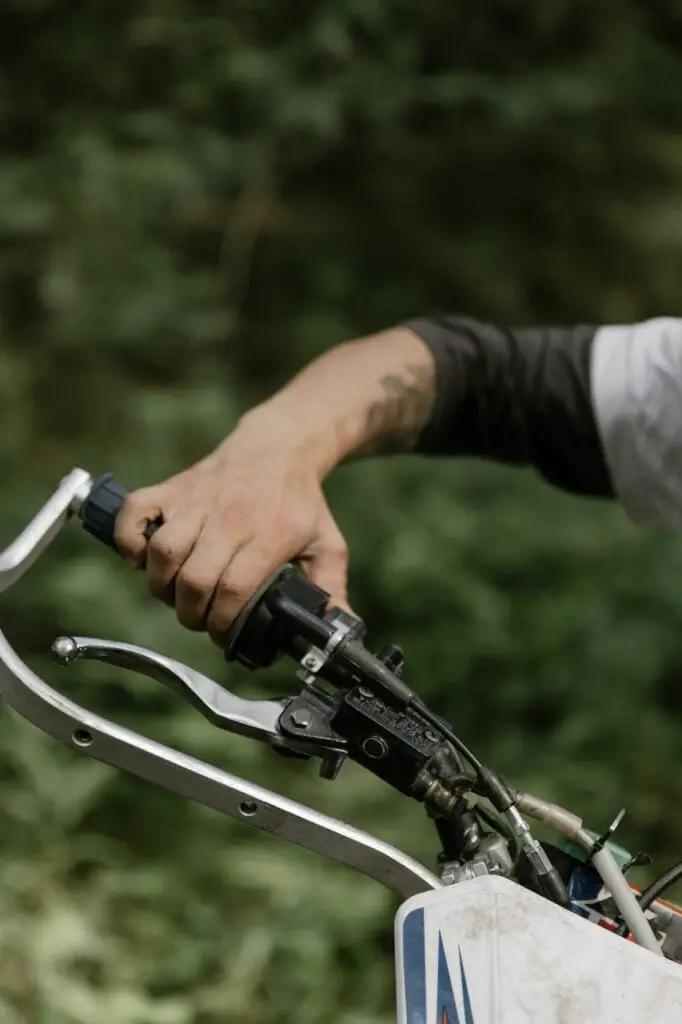
Now, let’s check out some handlebar styles:
- High-rise – for tall riders or those who prefer upright positions. They stabilize bumpy rides but sacrifice agility on tight turns.
- Flat – for shorter riders or those craving an aggressive stance. They give you responsiveness on gnarly trails but may fatigue you on long rides.
- Bend – strike a balance between comfort and performance. They reduce stress on your wrists and let you customize your grip.
- Tapered – lightweight and tough, suitable for durability and vibration control.
And let’s not forget about the different grip styles to choose from:
- Rubber – the go-to, affordable choice. They give you solid traction, but they wear out more quickly.
- Foam – provides a comfortable and smooth grip, plus excellent shock absorption. But watch out for tears and moisture.
- Lock-on – offers a secure hold without glue or tape fuss. They’re easy to install and come in all styles.
Bonus read: Are All Dirt Bike Grips The Same Size
4. Consider foot pegs and foot controls
Adding foot pegs and adjusting foot controls can genuinely level up your dirt bike riding experience, and I’m not just spinnin’ tires here, folks.
Foot pegs are like your grip on the bike, keeping you balanced and reducing fatigue.
They give you a solid platform to rest your feet on and help you maneuver through turns like a pro.
Foot controls include brake and gear levers.
They’re crucial for comfort and control, and if not adjusted properly, can be a pain in your, well, feet.
To set these up correctly, here are some tips:
- Ensure your brake lever is easy to reach with your right foot without stretching or straining. You want to apply enough pressure without losing contact with the footpeg.
- Position your gear lever for easy access with your left foot, smooth shifts, and no footpeg slippage.
- Align both levers with the direction of your feet to avoid banging your ankles or shins while riding.
5. Invest in high-quality dirt bike gear
I once witnessed my friend wearing a big, floppy helmet.
Yep, he crashed into a tree and got a concussion. Lesson learned: never skimp on properly fitted gear!
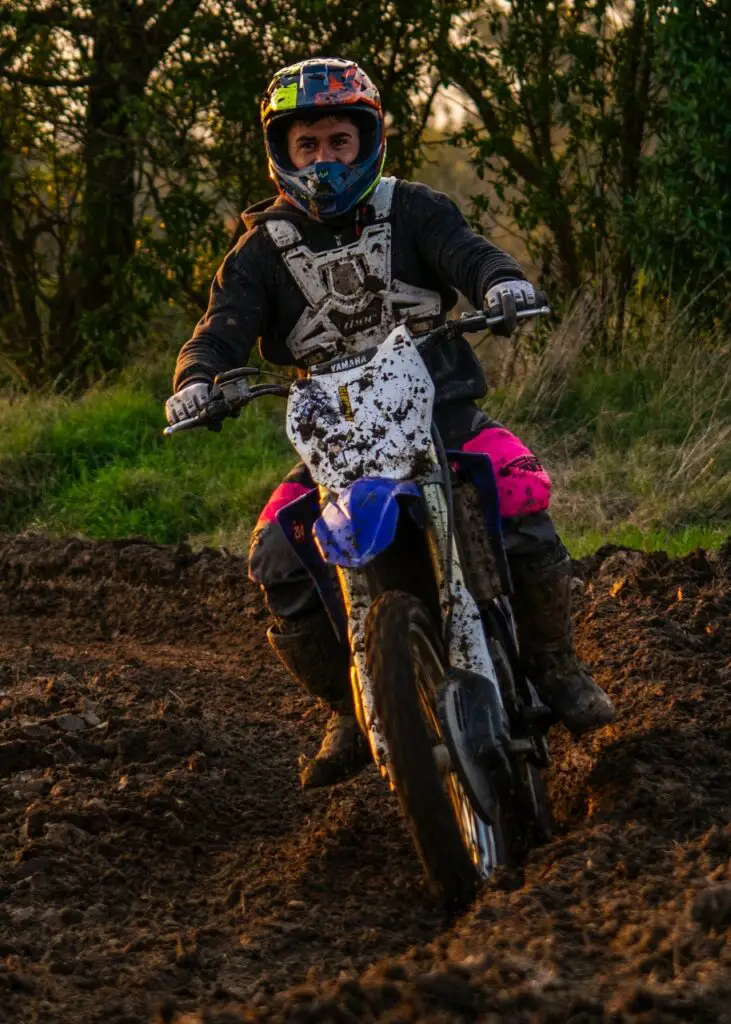
That’s why I’m all about dirt bike gear that fits right.
They protect you from impacts, debris, and scrapes while keeping you balanced and in control.
Opt for moisture-wicking and breathable fabrics that keep you cool and dry.
Polyester or nylon jerseys and pants are perfect for sweat absorption and quick drying.
You may also consider padded shorts for long rides.
They’ll save your butts, literally! They’ve got extra cushioning to keep you comfy on the longest and roughest trails.
Just a heads up, though – some folks find its fabric a bit snug, especially when it’s hot and you’re sweating like crazy.
But hey, they come cheap, so why not try them?
Bonus read: What Dirt Bike Gear Do You Need
6. Take breaks and stretch regularly
When hitting those wild trails, the excitement is real, but so are the demands on your body.
To stay comfortable and avoid fatigue, take breaks and stretch occasionally.
There are no strict rules about how often to take breaks.
Just listen to your body and take a breather whenever you need it.
Grab some water, have a snack, or quickly check your bike.
Stretching is vital too. It loosens those muscles, boosts flexibility, and gets that blood flowing.
Bust out those neck rolls, arm circles, and quad stretches before every ride.
And remember to hydrate! Staying hydrated is essential for peak performance.
It keeps you sharp and avoids headaches and cramps.
For long-term comfort, you should also consider cardio and strength training.
It’ll level up your endurance, power, speed, agility, balance, and coordination and prevent injuries.
Wrapping up
Now you know the secrets to making your dirt bike rides as comfy as a lazy Sunday afternoon!
Remember, a comfortable ride means a more enjoyable and safer dirt bike experience.
So why not give these ideas a try? Upgrade that seat, adjust those handlebars, and find your perfect riding position.
No more feeling like an old man whenever you hop out of your bike!

